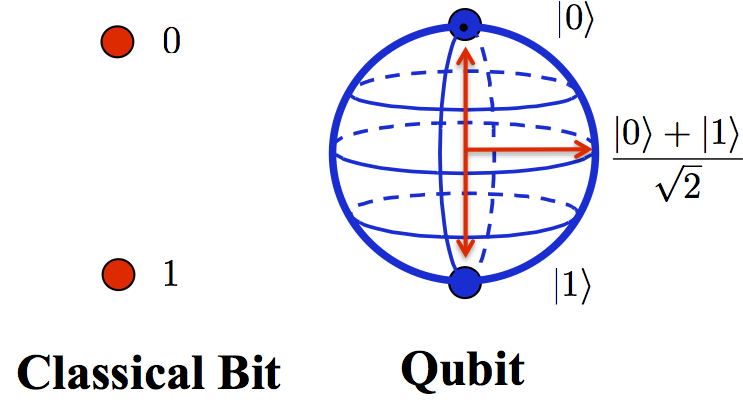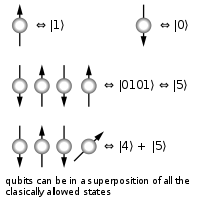This is a link to a Powerpoint template I created using Microsoft Powerpoint. It can be used as long as I am credited for the work.
To download the font I used, please go to http://www.dafont.com/search.php?q=grape+soda.
Monday, October 27, 2014
Tuesday, October 14, 2014
Computer Interfaces
Molex Connectors
Molex connectors are used to connect disk drives using a two piece pin and socket connection. The company Molex developed these in the late 1950s and early 1960s and are now used in cars, vending machines, and computers. Because the connections have a large contact surface area, they are most often used for power.
SATA Cables
Serial ATA, or SATA, are cables used to connect storage devices such as hard drives and optical drives. These replaced the Parallel ATA, or PATA, cables because they are cheaper, smaller, and faster than the PATA cables.
Jumper
Jumpers are conductors used to close a break in or an opening. When jumpers are put on two or more jumper pins, an electrical connection is made and the computer will activate settings according to the placement of the jumpers.
BIOS and CMOS Jumper
The BIOS and CMOS jumpers are used to clear the CMOS and BIOS passwords. These are located on the motherboard near the processor and CMOS battery or near the edge of the motherboard. To clear the CMOS and BIOS, put the jumper on the middle wire and the uncovered one and turn on the computer to see if the password has been cleared. If it has, put the jumper back in its original position.
Computer Fan
This cable gives power to active cooling fans. They can either be 2 pin, 3 pin, or 4 pin. Cooling fans are used to draw warm air away from the computer components so the parts operate more efficiently.
DVI Monitor Cable
The DVI monitor cable is used to connect the computer to the monitor. It can have up to 29 pins (DVI-I Dual Link). The signal speed is 60 Hz.


USB 3.0
The USB 3.0 is used to transfer data at a faster rate than USB 2.0. They can transfer data at 500 MB/s and can only be used in USB 3.0 ports. USB 3.0 ports are colored blue instead of black or white.
Firewire
Firewire is a interface used for data transfers. It was designed by Apple in the 1980s. It is similar to USB but USB has more of the market. Firewire is a serial bus and transfers data one bit at a time. It is often used to connect data storage devices and DV cameras.
PCI Buses
PCI is a bus for connecting RAM and other internal hardware to the motherboard. Any attached device is either an integrated circuit or an expansion card. The speed of these buses can be 133 MB/s, 266 MB/s, or 533 MB/s.
Display Port
The Display Port is a display interface developed by VESA (Video Electronics Standards Association) and is used to connect a video source to a video display device. The speed is 4.6 MB/s.
PS/2 Port
These ports connect Mice (green) and keyboards (purple) to a PC computer. They are 6 pin Mini-DIN connectors. The data signal is 10 to 16 kHz with 1 stop bit, 1 start bit, and 1 parity bit.
Monday, September 29, 2014
Steps to Install NAS4free
- 1) Boot from CD.
- 2) Once you get to the console menu configure the network interfaces. You can either select auto-detection or select your own. If you select auto-detection it will detect and add the correct interfaces.
- 3) After you configure the network interfaces, select number 2, configure network IP address. It will ask if you want to use DHCP, select yes.
- 4) The next thing it will ask is if you want to use IPv6. I selected yes but you could use either.
- 5) The next thing it will ask is if you want to enable autoconfiguration
Friday, September 19, 2014
Design Your Own Computer
Motherboard
The
motherboard is what all the components of a computer fit into and connects each
part.
Central Processing Unit (CPU)
The CPU is
where all the data is processed.
Random Access Memory (RAM)
The RAM
device allows data to be read and written at a very fast speed and regardless
of what data was accessed first.
Graphics Card
The graphics
card generates image feeds and sends them to a monitor. Video and graphics can
be integrated into the motherboard or CPU which might eventually make these
obsolete.
Power Supply Unit (PSU)
The PSU is
what supplies power to the other components. It converts the alternating
current from the wall socket to a low voltage direct current.
Hard Disk Drive (HDD)
Stores digital
information on a disk.
Solid-State
Drive (SSD)
Stores
information but unlike a HDD, it has no moving parts.
High End Computer

This
is an ASUS P9X79-E WS motherboard. It is compatible with Core i7, Xeon E5-1600 series, Xeon E5-2600 series
processors with a LGA2011 Socket. This part costs $512.49.
http://www.tigerdirect.com/applications/SearchTools/item-details.asp?EdpNo=7808049&CatId=1969
This is a HP
Xeon E5-2640 processor. These processors are designed for, cost-effectiveness,
energy efficiency, and performance running 2.50 GHz. This processor costs
$1047.
http://www.tigerdirect.com/applications/SearchTools/item-details.asp?EdpNo=7010612&CatId=11481
This is a PNY
Optima MD8192KD3 memory card. The memory speed & Interface DDR3 1333MHz. It
is made to boost the performance of a PC and for casual gaming with a 8GB
storage. This part costs $96.
http://www.tigerdirect.com/applications/SearchTools/item-details.asp?EdpNo=8989594&CatId=7387
This is a EVGA
GeForce GTX Titan Z graphics card. This graphics card is designed for gamers
and has 5760 cores and 12 GB of 7Gbps GDDR5 memory.
Interface PCIe 3.0 x16
It costs $3000.
http://www.tigerdirect.com/applications/SearchTools/item-details.asp?EdpNo=7739052&CatId=139
This is a Seagate
4TB Barracuda Internal Desktop hard drive. This hard drive can store 4
terabytes of data with 64MB buffer memory. It can transfer 4GB/s for fast data
transfers. It costs $150.
The recommended
PSU wattage is 595 watts. To meet this power usage I have chosen the Corsair RM
Series™ RM650 Fully Modular Power Supply Unit. It can deliver up to 650 W. It is
92% energy efficient with 140mm fan that runs silently. The fan doesn’t even
turn on until the PSU is under a heavy load.
This part costs
$120.
http://www.tigerdirect.com/applications/searchtools/item-details.asp?EdpNo=8592253
This computer
would cost about $5000 to build.
Computer I could realistically build someday
http://www.tigerdirect.com/applications/SearchTools/item-details.asp?EdpNo=8992456&CatId=8586
This is a ASUS
Z97-A ATX motherboard. It is compatible with 4th and 5th
generation intel core family processors with a LGA1150 socket. This part costs
$140.
http://www.tigerdirect.com/applications/SearchTools/item-details.asp?EdpNo=8526350&CatId=4729
This is a Intel®
Core™ i5-3340S Quad Core Processor. These
processors are fast and efficient with a clock speed of 2.8 GHz. This processor
costs $190.
http://www.tigerdirect.com/applications/SearchTools/item-details.asp?EdpNo=154009&CatId=11478
This is a Corsair
High Perform Vengeance 4GB DDR3 1600MHz memory card. The speed is 1600MHz and
is made for very good performance. This part costs $48.
http://www.tigerdirect.com/applications/SearchTools/item-details.asp?EdpNo=8899411&CatId=7387
This is a Asus
GeForce® GTX 750 TI graphics card. It was designed for 3D gaming with a 1150 MHz clock speed.
This card has dual fans for better heat removal efficiency and 3X lower noise
emissions.
Interface PCIe
3.0 x16.
This part costs $130.
http://www.tigerdirect.com/applications/SearchTools/item-details.asp?EdpNo=7686636&CatId=139
This is a Toshiba
3TB Internal hard drive. It can store 3TB of data with a 64MB buffer. At 7,200
RPM, this hard drive is extremely fast and only costs $100.
The recommended
wattage for this computer is 418W. To meet this requirement, I have chosen the Ultra
X4 750-Watt Modular Power Supply V2 PSU. It can deliver up to 750W of power.
This part costs $110.

http://www.tigerdirect.com/applications/SearchTools/item-details.asp?EdpNo=1583410&CatId=5440
This computer
would cost $718 to build.
I did not design
these computers for any specific purpose, but as it turns out, both would be
great gaming computers.
Thursday, September 4, 2014
Quantum Computing, Group Report. By Henry Meeker and Isaac Fuglestad.
 |
| The column of equipment for a quantum computer (NY Times, May 2013) |
 |
| Richard Feynman, the mind behind quantum computers (Brain Pickings, 2013) |
 |
| A vibration filter from a quantum computer (D-Wave Blog, Jan 2007) |
 |
| A close up of a quantum computer's processing chip (BBC, May 2013) |
 |
| A regular bit in comparison to a qubit (University of Strathclyde, 2012 |
Computers work of the idea of data having a value of a one or zero, on or off, true or false. Those data values are called bits, short for binary digits. Using transistors on silicon chips, a computer can change them to from ones to zeros. Using this, a regular computer can process the complex tasks it is given. A quantum computer uses quantum bits, also known as qubits. Instead of transistors on a chip, qubits are manipulated as single
atoms. These atoms may be in many positions, which means they won’t strictly be in the configuration of a one or a zero. They can be a one, a zero, or something in between; a superstate of a one and zero. That is the quantum portion of quantum computing, the very erratic behavior of matter at an atomic level. That is also what gives this new technology an advantage over classic computers. The fact that these qubits can be measured as both a one and zero allows it to process information that would take classic computers ages to calculate. Quantum computer excel in problems dealing with efficiency: finding the easiest path to travel, searching a very large database faster than classic computers, etc. A good analogy of quantum computers versus classic computers is trying to find the lowest valley in a mountain range. A regular computer would go about doing this by rolling over every surface in the mountain range, often getting stuck in what it thinks are the lowest valleys when really they aren’t. A quantum computer instead tunnels through until it finds the lowest point, which is much faster. While modern supercomputers and classic algorithms currently surpass quantum computers on some problems, as the new technology improves it will hopefully far surpass traditional computers.
 |
| Qubit functions (Wikimedia Commons, 2007) |
 |
| The equipment required to keep these computers cold
(Grunert Imaging, May 2013)
|
 |
| D-Wave machines (D-Wave Systems, 2012) |
 |
| The sensitive processor (NY Times, March 2013) |
 |
| One of the mammoth D-Wave computers (Vancouver Sun, Feb 2014) |
The first commercially available quantum computers were released in 2010 by D-Wave Systems. Each year D-Wave doubled the amount of qubits in the computers and by 2013 they had 512 qubits and were ready to be released. Quantum computers are still a work in progress and will likely take many more years before all their uses are discovered and the developers finally understand exactly how it works.
Paragraphs in Times New Roman written by Henry Meeker, those in Arial written by Isaac Fuglestad.
Wednesday, August 27, 2014
Introduction
Welcome to my blog! My name is Isaac and I will be using this blog to create an online portfolio of technology, media and other projects in digital format.
Subscribe to:
Comments (Atom)






.jpg)
























